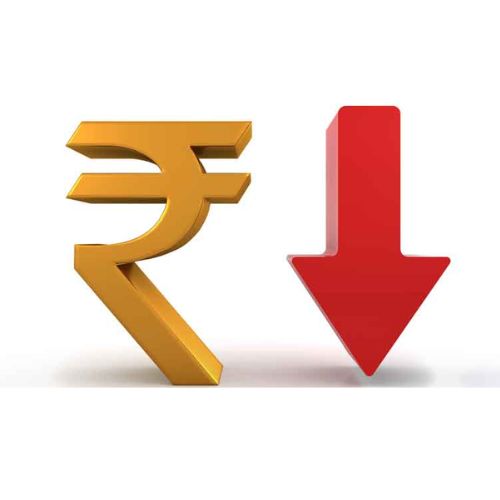Following the government’s announcement, Indian oil companies will have to pay Rs 6 per litre (around USD 12.2 per barrel) on exports of petrol and ATF, and Rs 13 per litre (around USD 26.3 per barrel) on exports of diesel. At the same time, upstream producers will have to pay taxes of Rs 23,250 per tonne (around USD 38.2 per barrel) of crude oil produced in India.
The windfall taxes on domestic crude oil production and fuel exports will generate close to USD 12 billion (Rs 94,800 crore) for the government in the remainder of the current fiscal while trimming profits of firms such as Reliance Industries Ltd and ONGC, Moody’s Investors Service said Tuesday.
On July 1, the government imposed windfall gain taxes on the export of petrol, diesel and aviation turbine fuel (ATF), and on the domestic production of crude oil. It has also mandated exporters to meet the requirements of the domestic market first.
“The tax increase will reduce the profits of Indian crude producers and oil exporters like Reliance Industries Limited and Oil and Natural Gas Corporation Ltd (ONGC),” Moody’s said in its comments on the new taxes. Following the government’s announcement, Indian oil companies will have to pay Rs 6 per litre (around USD 12.2 per barrel) on exports of petrol and ATF, and Rs 13 per litre (around USD 26.3 per barrel) on exports of diesel. At the same time, upstream producers will have to pay taxes of Rs 23,250 per tonne (around USD 38.2 per barrel) of crude oil produced in India.
“Based on the production of crude oil and export of petroleum products in India in the fiscal year ended on March 31, 2022 (fiscal 2021), we estimate that the government will generate close to USD 12 billion of additional revenue for the remainder of fiscal 2022,” the rating agency said. The additional revenue will help to offset the negative impact of a reduction in excise duties for petrol and diesel announced in late May to tame soaring inflation.
In May 2022, the government announced a cut in the excise duty of Rs 8 per litre on petrol and Rs 6 a litre on diesel, which is estimated to have reduced its revenues by Rs 1 lakh crore. ”Significant additional tax revenue will offset fiscal pressure on the sovereign,” it said. ”We expect this government measure to be temporary and that taxes will be eventually adjusted according to market conditions, including considerations related to inflation, external balances and currency depreciation.” Moody’s said higher revenue also supports its view that the gradual fiscal consolidation trend will continue, notwithstanding associated risks posed by the current inflationary environment, such as higher subsidy spending.
“India’s higher export duties for fuel products will curtail export receipts, but the concurrent announcement of higher customs duties on gold imports will serve to limit a further widening of the current account deficit. The country’s large foreign exchange reserves remain sufficient to preempt any issues concerning the repayment of external debt despite the weakening of the rupee,” it said.
The rating agency said the rise in tax payments is not expected to materially weaken the RIL or ONGC’s credit quality because their margins will continue to be healthy. ”High crude oil prices will support the earnings of oil producers. And while profits generated from oil exports will fall because of windfall taxes, they will likely remain higher than the levels over April 2020 to March 2022 if refining margins are sustained at the highs seen in April to June this year,” it said.
The increase in government taxes will limit the earnings upside for RIL’s exports, but will not materially affect its solid credit quality and excellent liquidity. RIL is the largest exporter of petroleum products from India. In the fiscal year ended March 2022, the company generated about 41 per cent of consolidated EBITDA from its oil-to-chemicals business.The increase in taxes on crude oil production will reduce ONGC’s margins, but this is mitigated by current high oil prices and the company’s low cost of production, Moody’s said.














